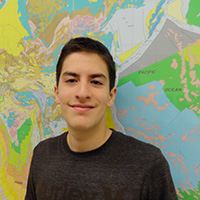 Geochemical Analysis and Comparison of Mid-Miocene Volcanics near La Rumorosa and Laguna Salada, Baja California with Jacumba Volcanics and Central Baja California BajaitesDavid Tamborrell Thursday, May 7th, 2015 |
||
|
||
| ABSTRACT Middle Miocene volcanic rocks of the Jacumba Volcanics and Alverson Formation occur in scattered outcrops in eastern San Diego and western Imperial counties along the western edge of the Salton Trough, and similar rocks are exposed just to the south across the border in Baja California near La Rumorosa and Laguna Salada. The volcanic rocks in these areas are ‘post-subduction’ volcanics, which erupted following the progressive subduction of the Farallon-Pacific plate spreading center starting around 30 Ma (Animation 4.2 in Atwater and Stock, 1988). Recent petrologic work on the Jacumba and Alverson rocks (Kimbrough and Camp, 2014), suggests these rocks are similar to classic high magnesium andesites, “bajaites,” and adakites known from central Baja California 350 km to the south (Castillo, 2008; Calmus et al. 2002). The Jacumba and Alverson rocks however are substantially older than their Baja California counterparts and were erupted within a ‘slab-free’ segment of the margin in contrast to central Baja where remnants of the Farallon Plate are presumed to persist beneath the margin. |

